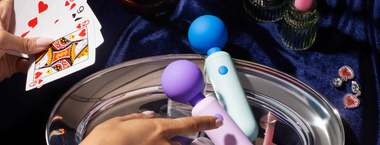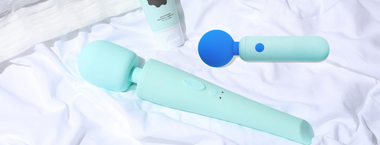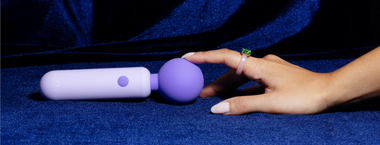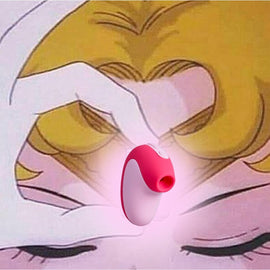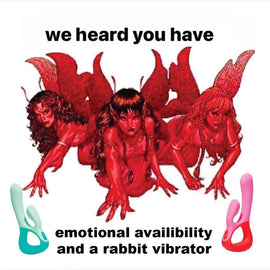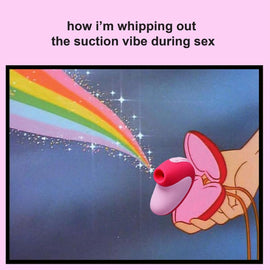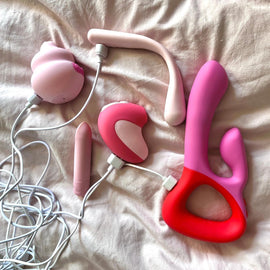How Clutch Works
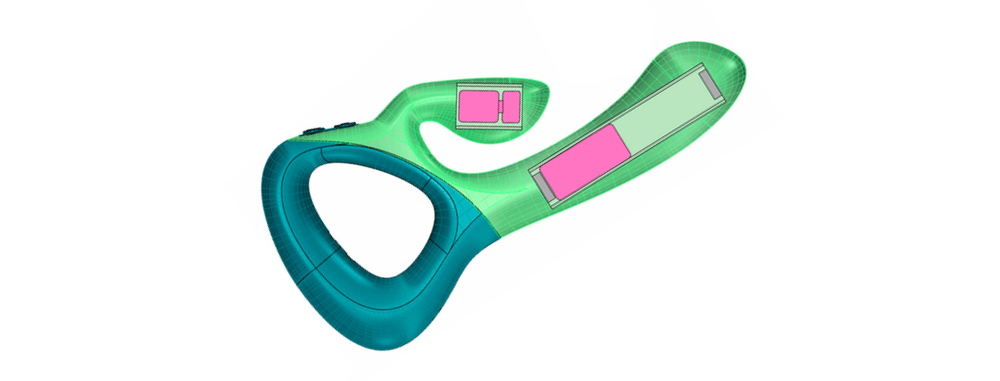
This summer, our team shared our newest vibe, Clutch, with the world. We've talked about making a rabbit vibe since we started Unbound and we've been so stoked to finally see it winning over the hearts and minds (and bods) of our community. Over the years, we've received overwhelming feedback from the amazing Unbound community (40% of all survey respondents!) that they would love to experience a thrusting vibrator combined with external stimulation. Most thrusting vibes today use a mechanical up-and-down motion, which in addition to being noisy and distracting, also make it difficult to maintain body contact for external targeted stimulation because of how much the product physically moves while in use. And one thing we can all agree on these days: external stimulation is very, very important. So we built Clutch- our bold new take on the iconic rabbit vibrator.
To provide an internal thrusting mechanism that people will love, we turned to one of the Earth’s most incredible elements: polarity. By using electromagnetic fields, we were able to develop a patent-pending technology that uses magnets to create a thrusting mechanism that minimizes the movement of the vibe while internally inserted. This, combined with the flexibility of the external arm, allows the user to experience the rumbly internal stimulation coupled with targeted external vibrations, delivering on the desired effect of dual stimulation.
For our visual leaners out there, this diagram depicts the internal thrusting mechanism:

Q: How does electromagnetic stimulation work?
A: The internal thrusting mechanism's coiled tube is a solenoid, or electromagnet. When an electric current runs along the coiled wire, the current creates a magnetic field. You can imagine the internal mech's coiled tube as one big bar magnet, with a north and south pole.
When the current running through the wire coil is constant, that magnetic field is also constant. However, if the current running through the wire changes, the magnetic field also changes. If you program the circuit to send an alternating current (i.e., a current whose direction repeatedly changes), to run through the coil, the direction of the magnetic field changes with it. It would be like if that imaginary bar magnet were flipping its orientation over and over again so the poles kept switching sides.
Now, imagine a smaller magnet suspended inside the imaginary bar magnet. When the polarity of the big magnet keeps switching, the smaller magnet will be attracted to one side and then repelled from that side when it switches, so it keeps moving back and forth. The system runs an alternating current through the copper coil wire, which creates an alternating magnetic field, which pushes and pulls the internal magnetic core to and from the ends of the tube.
A changing magnetic/electric field, also called an electromagnetic field (EMF), can be visualized as waves of energy. If you’re interested in learning more, check out this explainer video!
Q: Is electromagnetic stimulation safe?
Clutch uses an electromagnetic field to power the internal stimulation and recommends speaking with your health care provider prior to using Clutch if you use a pacemaker or similar medical electronic device.
Clutch’s frequency is 5-12 Hz, which puts it in the category of ELF, an extremely low frequency, EMF. ELF EMTs are mild and thought to be harmless to people. Household appliances like microwave ovens, cellphones, hair dryers, and washing machines, as well as power lines and MRIs, produce this type of radiation. This category of EMFs includes extremely low frequency EMFs (ELF-EMFs) and radio frequency EMFs (RF-EMFs). According to the WHO, “To date, no adverse health effects from low level, long-term exposure to radio frequency or power frequency fields have been confirmed. Furthermore, in the area of biological effects and medical applications of non-ionizing radiation approximately 25,000 articles have been published over the past 30 years. Despite the feeling of some people that more research needs to be done, scientific knowledge in this area is now more extensive than for most chemicals. Based on a recent in-depth review of the scientific literature, the WHO concluded that current evidence does not confirm the existence of any health consequences from exposure to low level electromagnetic fields.”
Additional key points from the WHO:
- A wide range of environmental influences causes biological effects. 'Biological effect' does not equal 'health hazard'. Special research is needed to identify and measure health hazards.
- At low frequencies, external electric and magnetic fields induce small circulating currents within the body. In virtually all ordinary environments, the levels of induced currents inside the body are too small to produce obvious effects.
- The main effect of radio frequency electromagnetic fields is heating of body tissues.
- There is no doubt that short-term exposure to very high levels of electromagnetic fields can be harmful to health. Current public concern focuses on possible long-term health effects caused by exposure to electromagnetic fields at levels below those required to trigger acute biological responses.
- WHO's International EMF Project was launched to provide scientifically sound and objective answers to public concerns about possible hazards of low level electromagnetic fields.
- Despite extensive research, to date there is no evidence to conclude that exposure to low level electromagnetic fields is harmful to human health.
- The focus of international research is the investigation of possible links between cancer and electromagnetic fields, at power line and radio frequencies.
Q: Do you have safety certificates available?
Yes, if you'd like to see the certificates, please email us at hello@unboundbabes.com.
Q: So what does it actually feel like?
To have the best possible experience with Clutch, we recommend using a lot of lube since it will help with inserting it. One of the additional benefits of housing our thrusting mechanism is that you get all the benefits of a repetitive thrusting without the friction. The thrusting sensation mixed with the external stimulation creates this intense, all encompassing feeling that really starts to build momentum while you use it. Most product testers found that it took a few tries to find the right angle and intensity pattern for them but once they did, it was off to races. You know, the kind where everyone is a winner.
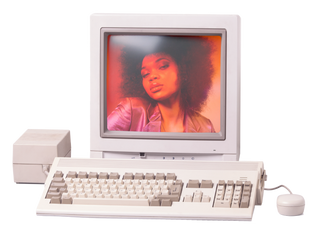
Latest Articles

A Hot and Quick Guide to BV, UTIs, and Yeast Infections

9 Acts of Queer Resistance to Know in Addition to the Stonewall Riots

